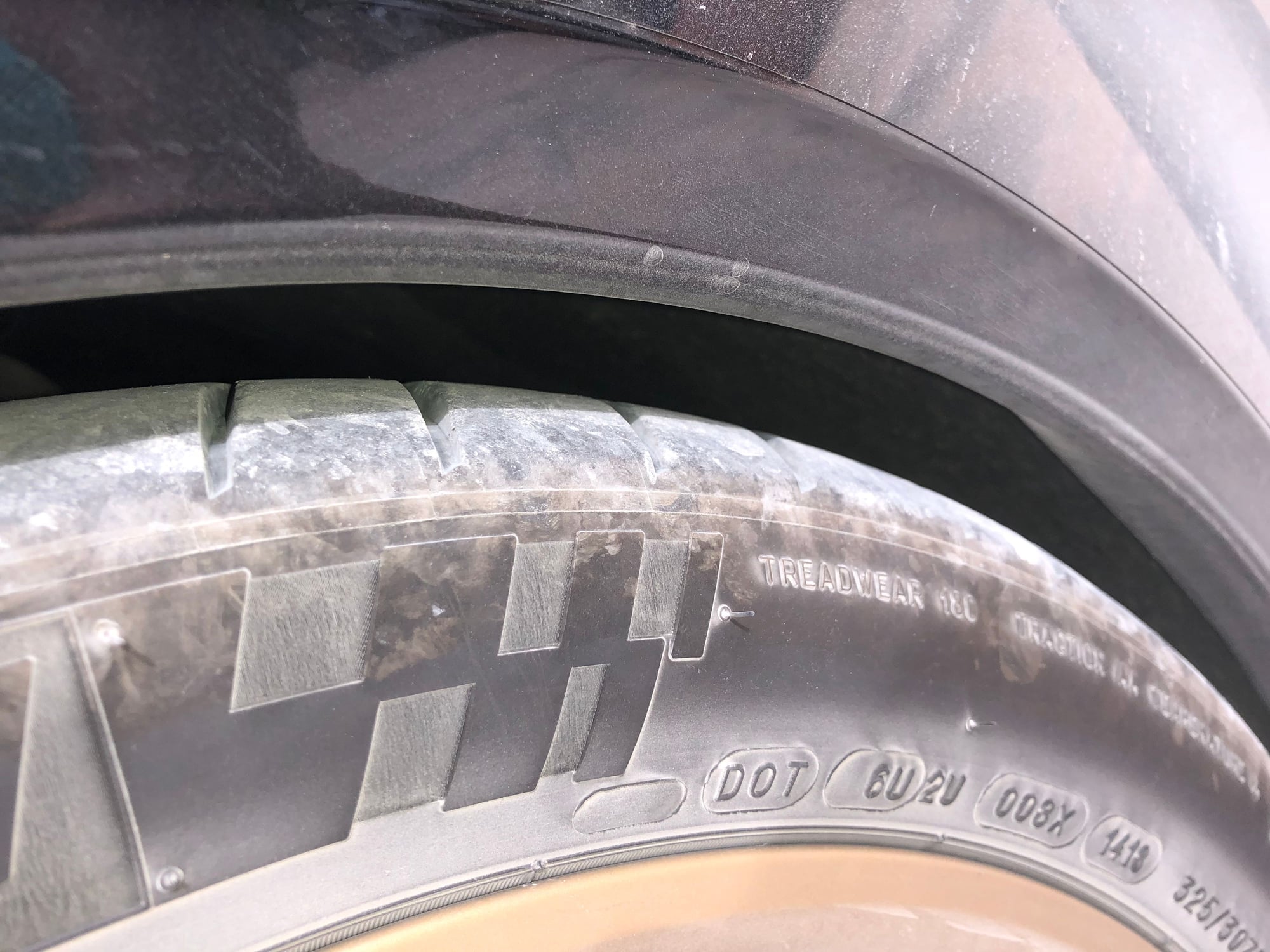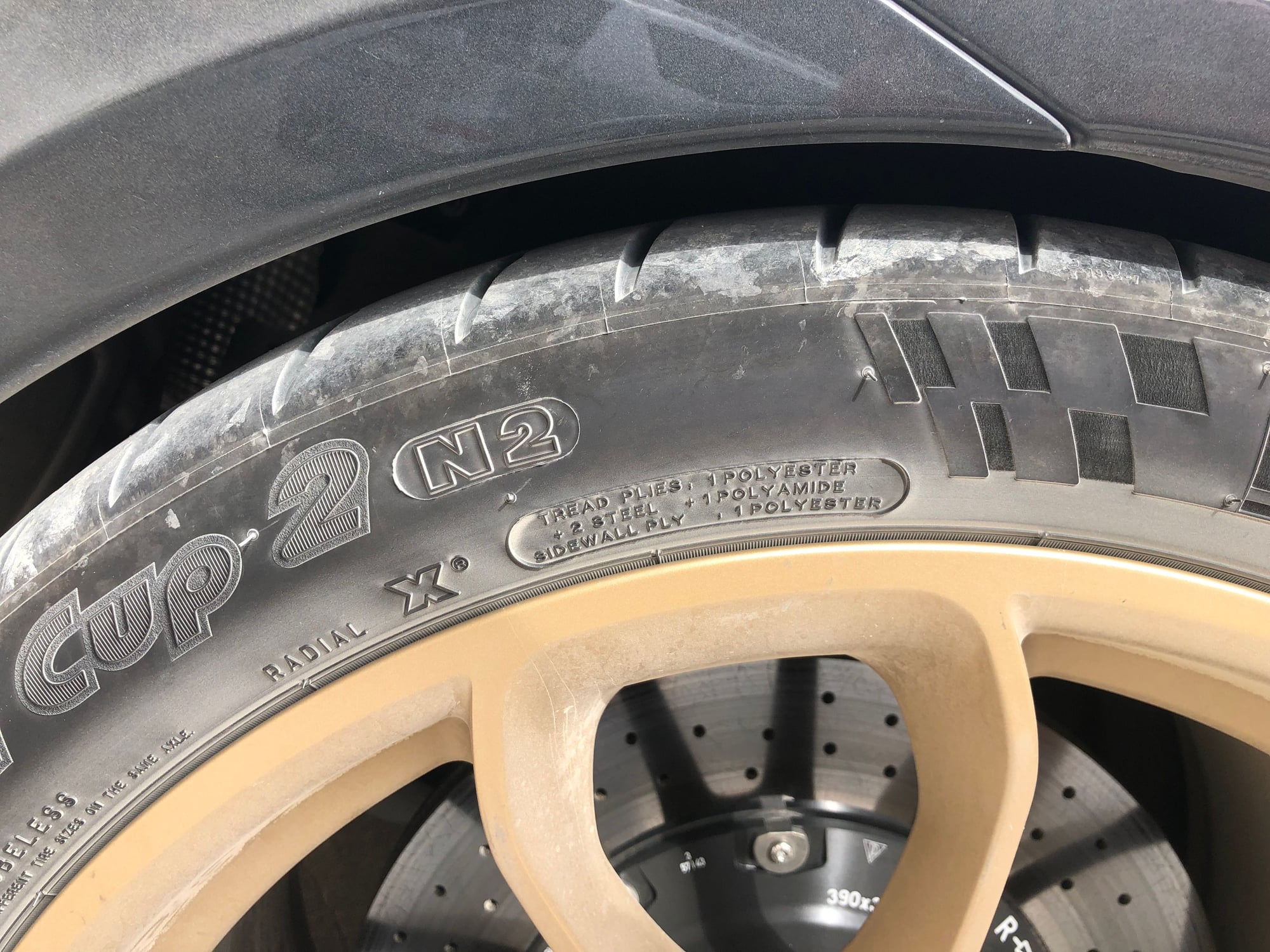Cup 2 tires on a very hot day
#16
if you remove air when overheated, they will increase heat and bake the tire. pressure does not indicate slippery performance, the tire has an optimum pressure for traction and wear. If you have a large jump in pressure and the tire starts to bake, you need to ADD AIR, not bleed it. Removing air will increase temp, you need to balance the temp by adding air to lower operating temp. EX
30lbs, at temp, cranking on them should be close to the recommended pressure for optimum performance. if they are too high, add air, it will lower temp and control baking
30lbs cold, if the tire is lower, then remove air. more air gives the tire a slower heat cycle. allows for more abrasion and fading. if you run too low, you will get limited heat cycles and bake the tire, causing it to become greasy. Ask you fellow motorcycle guys who race or do a lot of track days. you need cycles and balance, too low, bakes the sh@t out of the tires, causing them to be greasy.
30lbs, at temp, cranking on them should be close to the recommended pressure for optimum performance. if they are too high, add air, it will lower temp and control baking
30lbs cold, if the tire is lower, then remove air. more air gives the tire a slower heat cycle. allows for more abrasion and fading. if you run too low, you will get limited heat cycles and bake the tire, causing it to become greasy. Ask you fellow motorcycle guys who race or do a lot of track days. you need cycles and balance, too low, bakes the sh@t out of the tires, causing them to be greasy.
#17
tires do slide, they also slide predictively when at proper pressure, greasy tires delaminate, causing the tire to slip, no slide. you should be able to run close to stock recommendation without issues unless you start dropping in temp by 10 to 20 degrees, then you may have to lower tire pressure by a few pounds. again, run you favorite road until you feel its really up to temp, then check them, if they have not moved, lower the pressure by a few lbs, if too high, add a few pounds, try to stay around 10% increase from ambient (cold temp)
#18
At Road atlanta, in the morning in october its cold, i drop pressure by 3 to 4 lbs, by mid day, sun is out, temps outside up 30 degrees, i add air to compensate for the temp change. always trying to keep the tires around the recommended temp. now if i could afford to shotgun new rubber every 30 laps or so, you could run a minimally lower temp to grab the extra 10% out of the tires, understanding they will bake and become slippery and worthless if you extend you time. so for street, i would set them aprox 3lbs less than recommended on cool, to cold days, then back to normal pressure on days in the high 70's low 80's
I add 2 to 3 lbs on mid 90's days when pushing on back roads for long periods of time.
I add 2 to 3 lbs on mid 90's days when pushing on back roads for long periods of time.
#19
Rennlist Member
I know this but I canít get it right.
I pretty much kill the tires by 10 cycles.
if I start below 20 I can keep them below 34 almost the entire session but I lose the first 3 laps.
if I start at 26 they go 40+ but once they hit over 35 theyíre gone.
on Hoosiers itís less so. I have the rears dialed in with even wear at about 33 hot. Starting at 20ish
Fronts still cord on outside with 3.5Camber, needs a bit more.
its just too hot and himud and I donít always have nitrogen.
But to your point, I will start higher, put in the flyers and just deal with the greasy tires at the end.
I pretty much kill the tires by 10 cycles.
if I start below 20 I can keep them below 34 almost the entire session but I lose the first 3 laps.
if I start at 26 they go 40+ but once they hit over 35 theyíre gone.
on Hoosiers itís less so. I have the rears dialed in with even wear at about 33 hot. Starting at 20ish
Fronts still cord on outside with 3.5Camber, needs a bit more.
its just too hot and himud and I donít always have nitrogen.
But to your point, I will start higher, put in the flyers and just deal with the greasy tires at the end.
#20
you should not see any change in pressure if you run nitrogen, The static pressure cannot change due to the nitrogen not expanding. The hoosiers fade less due to the compound. so now we are getting into compound, different tires do different things. I pound the sh@t out of my cup 2s in the mountains and never feel a thing that would be common on the track. i can run standard pressure and never feel any fatigue. My guess is the BRNTRubber is not getting any temp into the tires, hence they are cold and slipper, not over heated. I would never set any tire at 20lbs, i would start on full slicks at 29ft 31 to 33 rear, the tire is not meant or built to operate that low. you need to Shed rubber, if you are not shedding rubber, you are baking the tire. too high of temps, they grease up and become shinny, you want them to look chewed and rough. Then cycles will shed rubber, allowing the rubber to actively stick.
this is a perfect example of motorcycle tire issues, setup is also key, if the car has too much camber, you overheat the inner belts, or if you have too much toe etc etc, the car works the same as the bike. so how you drive it also affects how it reacts. pushing through the turns vs driving thought the turns, getting the car to settle before the apex etc etc. those who can dance around the track have better results, its the iron man approach that kills tires. poor entire and exit, pushing the car vs drifting the car etc etc.
I am no expert at cars, was once an expert at cycles, spent many years perfecting the art of setup, suspension and tire pressure.. found out along time ago, you cannot cheat science. the recommendations are pretty much spot on, unless you can compensate all the other factors, usually best left alone. I think OrthoJoe said it best, he went crazy trying to balance tire wear and traction, now his new gt3 is stock camber, canister and toe. its hard to manage something that is consistently changing around you without your ability to control it. unless you have unlimited funds, you will probably have worse results with a lot of fiddling.
this is a perfect example of motorcycle tire issues, setup is also key, if the car has too much camber, you overheat the inner belts, or if you have too much toe etc etc, the car works the same as the bike. so how you drive it also affects how it reacts. pushing through the turns vs driving thought the turns, getting the car to settle before the apex etc etc. those who can dance around the track have better results, its the iron man approach that kills tires. poor entire and exit, pushing the car vs drifting the car etc etc.
I am no expert at cars, was once an expert at cycles, spent many years perfecting the art of setup, suspension and tire pressure.. found out along time ago, you cannot cheat science. the recommendations are pretty much spot on, unless you can compensate all the other factors, usually best left alone. I think OrthoJoe said it best, he went crazy trying to balance tire wear and traction, now his new gt3 is stock camber, canister and toe. its hard to manage something that is consistently changing around you without your ability to control it. unless you have unlimited funds, you will probably have worse results with a lot of fiddling.
#21
Rennlist Member
Pressure will change as a function of temperature in a constrained volume. Boyle's Law. It will just rise in a more consistent rate compared to air, which has contaminants. Best to dry your tire inside walls off before that nitrogen fill to get the full benefit.
#22
Nitrogen doesn't expand as a function of temperature?
Pressure will change as a function of temperature in a constrained volume. Boyle's Law. It will just rise in a more consistent rate compared to air, which has contaminants. Best to dry your tire inside walls off before that nitrogen fill to get the full benefit.
Pressure will change as a function of temperature in a constrained volume. Boyle's Law. It will just rise in a more consistent rate compared to air, which has contaminants. Best to dry your tire inside walls off before that nitrogen fill to get the full benefit.
#24
Rennlist Member
What temp is the gas is inside the tire after a bunch of hot laps? Ambient temp?
#25
Drifting
My tires are filled with nitrogen. They definitely change pressure. From 36psi up to 41psi in the rears as I said earlier.
I guess I don't understand how this stuff works. Y'all are saying that because my tire pressure gets up too high, I need to add air? Seems backward to me but ok I'll try it.
Just a cruise down the highway and they get up to 38/39.
I guess I don't understand how this stuff works. Y'all are saying that because my tire pressure gets up too high, I need to add air? Seems backward to me but ok I'll try it.
Just a cruise down the highway and they get up to 38/39.
#26
Addict
Rennlist Member
Rennlist Member
#27
Rennlist Member
I'm lost on that as well...I tried Orthojoes method of starting cold where you want to and not bleeding any throughout the day. That worked fairly well - just had to make sure I didn't overdrive the tire. But, I never ADDED air when the air pressure got to high?!?! Can't figure that one out. Maybe he means when the tire temps got to high (when using a pyrometer) as opposed to the tire pressure (when a tire pressure air gauge).
#28
Rennlist Member
OP, post pictures of your tread if you can. I know this has been debated above but you tell a compound vs. pressure issue easily from pics.
#29
Three Wheelin'
Thread Starter
#30
My tires are filled with nitrogen. They definitely change pressure. From 36psi up to 41psi in the rears as I said earlier.
I guess I don't understand how this stuff works. Y'all are saying that because my tire pressure gets up too high, I need to add air? Seems backward to me but ok I'll try it.
Just a cruise down the highway and they get up to 38/39.
I guess I don't understand how this stuff works. Y'all are saying that because my tire pressure gets up too high, I need to add air? Seems backward to me but ok I'll try it.
Just a cruise down the highway and they get up to 38/39.
PV=znRT applies to Nitrogen as it does for other gases.



